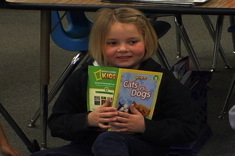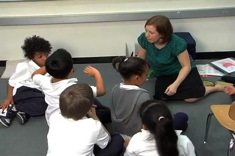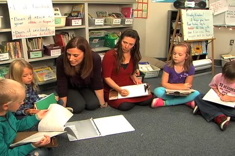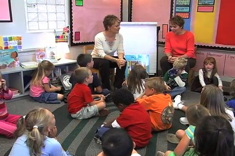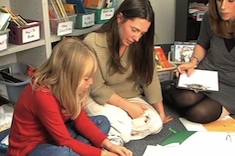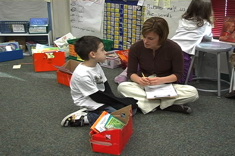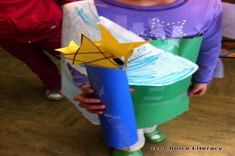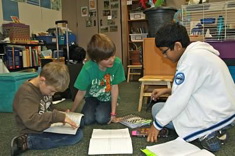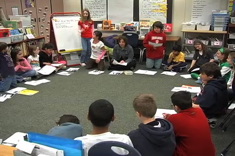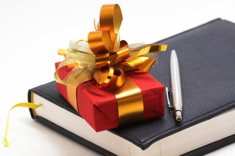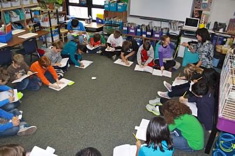2nd
Latest Content
Listen In: XBox Game Writing
Boys and their toys: Heather Rader confers with a second grader over his game writing while Linda Karamatic listens in.
Second-Grade Punctuation Conference
Beth Lawson confers with a second grader, assisting as she works on her punctuation skills.
Previewing Nonfiction
Teachers are adding more nonfiction to their classroom libraries, and looking for ways to promote nonfiction with students in light of the emphasis on nonfiction in the Common Core. Franki Sibberson share tips for previewing nonfiction with students.
Status of the Class and Monitoring Behavior
In this early year video from Beth Lawson’s second-grade classroom, Beth uses a writing status-of-the-class time to help students monitor their behavior, using peers as role models.
Conferring: Stretching Words
In this conference with a second grader, Beth Lawson uses a visual aid and a hand motion to help a young English language learner understand the concept of stretching words in writing.
Voila! Best Writing and Entry Slips in Second Grade
The word voila in French literally means “see there.” Linda Karamatic puts time and reflection into creating a binder, or “voila book,” that will ease the bulging writing workshop folders and preserve the best of her second-grade students’ writing.
Second-Grade Team Meeting: Helping Students Choose Books Independently
In this five-minute excerpt from a second-grade team meeting, Principal Karen Szymusiak sits in on a discussion about the challenges of helping young readers learn to pick appropriate books independently.
Grades K-2 Fluency Lesson
In this video from a K-2 multiage classroom, Joan Moser and Gail Boushey ("The Sisters") present a fluency lesson to the whole class.
Listen In: Magnifying a Moment in Writing
Sometimes using a prop can help young students understand a revision strategy. Heather Rader helps second-grader Sammi understand how to “magnify” a moment when revising her writing.
Listen In: Spelling Aids in the Writing Workshop
Many commercial aids are available to assist young writers. The challenge is choosing carefully, and integrating them into workshops in a way that doesn’t inhibit student fluency and risk-taking. In this video, Heather Rader confers with a second grader, demonstrating how to use a spelling log for high-frequency words.
Helping Young Readers Become Independent
Teachers speak often about the importance of helping students become independent, but what does that look like in practical terms? Katie DiCesare considers her interactions with Evan, an emergent reader, on the road to independence.
Making Kids Aware of Their Thinking
If we stopped every time a child was thinking, wondering or connecting to our read aloud, we’d lose the continuity of the writing. Jennifer McDonough teaches students gestures to give her feedback about when and how kids are thinking.
Top 10 Technology Tools for Teachers
If you're overwhelmed with the slew of new technology tools coming out all the time (and who isn't?), you might appreciate Scott Sibberson's Top 10 Tech Tools for Teachers. You are probably using some of the tools daily, and may discover a few new ones too.
Spelling Rules — Or Does It?
Heather Rader introduces a new spelling series and maps out the topics she’ll be tackling.
Readers’ Theater Revisited
Katie DiCesare becomes reacquainted with an old curricular friend. But in trying reader’s theater again in her primary classroom, she finds ways to streamline the process and foster more independence in students.
Tech Tools for Our Youngest Learners with Kathy Cassidy (PODCAST)
Kathy Cassidy has the tips and tools of the trade for increasing technology in developmentally appropriate way for little ones.
Math Journals
Julie Johnson rekindles her love affair with math when she incorporates journals and sees her students become more adept at organizing and explaining their thinking.
Linking Morning Message, Poetry, and Word Learning
Second-grade teacher Linda Karamatic has been starting her morning with a message for years. The morning message is just one part of her daily opening that reinforces community.
Assessment Conferences: Listening to and Learning from Our Students
Research, decide, and teach – Clare Landrigan and Tammy Mulligan use Lucy Calkins’ wise advice in assessment conferences with children.
Read Alouds for the Last Days of School
Choice Literacy readers share some of their favorite read alouds for the last days of school.
Literacy Keepsakes to Carry Home at the End of the School Year
Choice Literacy readers share their favorite gifts for students to make and take home at the end of the year.
More Literacy Keepsakes to Carry Home at the End of the School Year
Choice Literacy readers share more of their favorite end-of-year gifts for students to make and take home.
Beginning with the End in Mind: Planning Ahead for Closing Activities
Choice Literacy readers share their favorite end-of-year activities that circle back to events from the start of the school year.
Pencil Plans
The care and use of the lowly pencil in classrooms says a lot about what we value and our relationships with students.
Read Alouds for the First Day of School
Choice Literacy readers share their favorite read alouds for the start of the year.
Primary Series Study
Katie DiCesare describes the primary series study unit she completes with her 1st and 2nd graders, combining reading, writing, and community building.
Make it Personal
The connections we make with students and families are what we remember most when all is said and done. Trish Prentice has thoughts on what changes a respected teacher into a beloved teacher.
Injecting Writing into Everything: Prediction Stories
What happens between kindergarten and upper elementary grades to make students more hesitant about making predictions? Heather Rader has books and teaching suggestions for building prediction skills.
Book Matchmaker: Texts to Build Stamina
In this installment of Book Matchmaker, Franki Sibberson has suggestions for books to build reading stamina in students.
Parent Contributions Beyond Instructional Support
Parents want to contribute, but not all contributions are welcome or even helpful when it comes to teaching children how to read and write. Trish Prentice has suggestions for making the most of family skills and willingness to help.
Browse Content By
Type
Category
- Assessment Tools
- Big Fresh Archives
- Booklists
- Choice Numeracy
- Classroom Design
- Common Core
- Community Building
- Conferring
- Content Literacy
- Digital Literacy
- English Language Learners
- Equity
- Family Relations
- Free Samples
- Guiding Groups
- Leadership
- Literacy Coaches
- Mentor Texts
- Minilessons
- New Teacher Mentors
- Podcasts
- Poetry
- Quote Collections
- Reading Strategies
- Self Care
- Struggling and Striving Learners
- Talking and Listening
- Teacher Study Groups
- Teaching Reading
- Teaching Writing
- Word Study and Vocabulary
Author
- Melissa Quimby
- Nawal Qarooni
- Gwen Blumberg
- Julie Cox
- The Lead Learners
- Hannah Tills
- Josie Stewart
- Ruth Metcalfe
- Mallory Messenger
- Becca Burk
- Jodie Bailey
- Vivian Chen
- Mary Brower
- Tiffany Abbott Fuller
- Stephanie Affinito
- Ruth Ayres
- Leigh Anne Eck
- Heather Fisher
- Shari Frost
- Julie Johnson
- Suzy Kaback
- Gigi McAllister
- Shirl McPhillips
- Melanie Meehan
- Cathy Mere
- Debbie Miller
- Tara Barnett and Kate Mills
- Tammy Mulligan
- Dana Murphy
- Bitsy Parks
- David Pittman
- Brenda Power
- Heather Rader
- Matt Renwick
- Mandy Robek
- Christy Rush-Levine
- Gretchen Schroeder
- Jen Schwanke
- Brian Sepe
- Katherine Sokolowski
- Stella Villalba
- Jennifer Vincent
Grade Level
Choice Literacy Membership
Articles
Get full access to all Choice Literacy article content
Videos
Get full access to all Choice Literacy video content
Courses
Access Choice Literacy course curriculum and training



